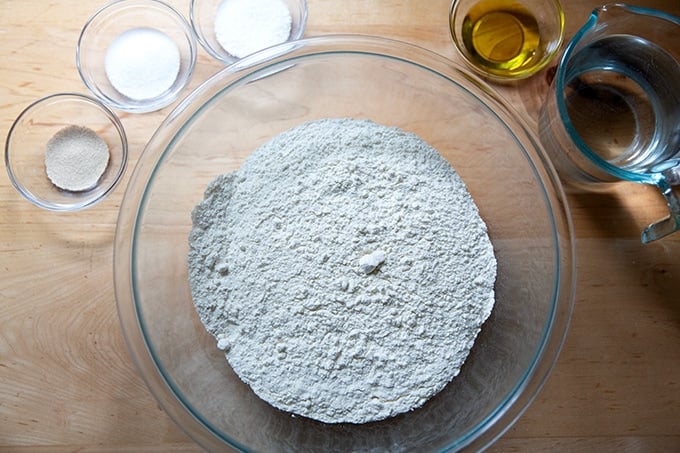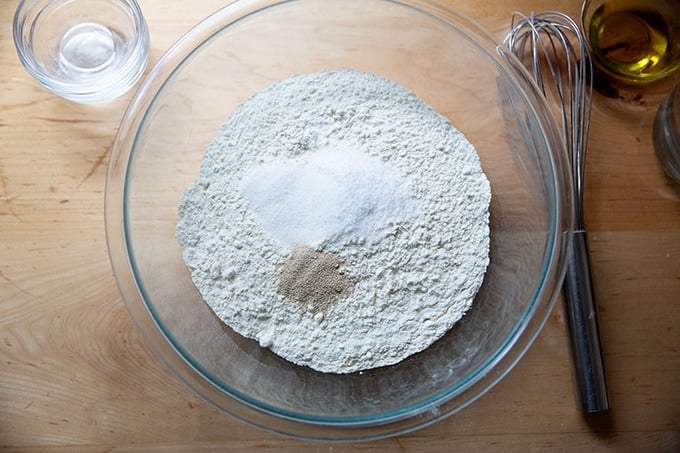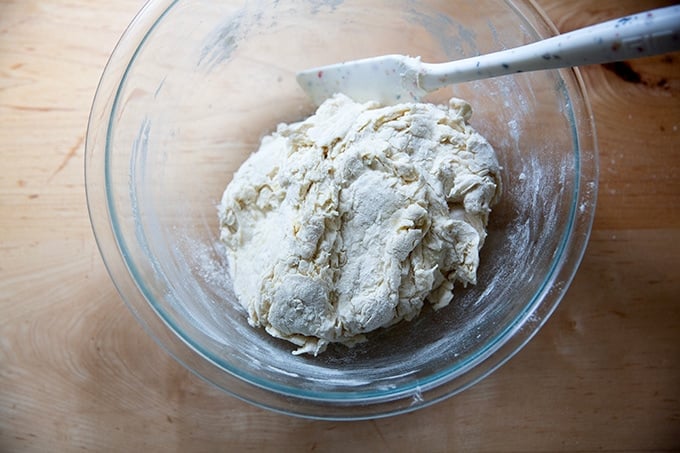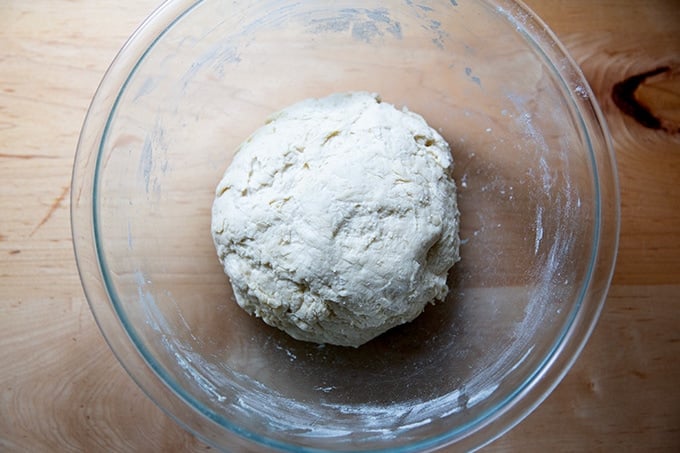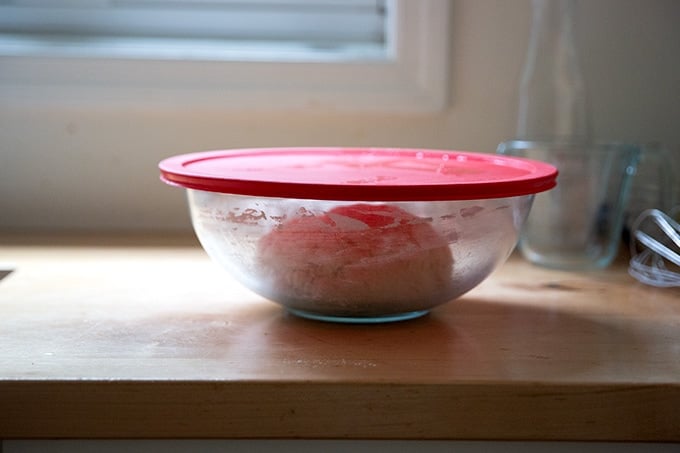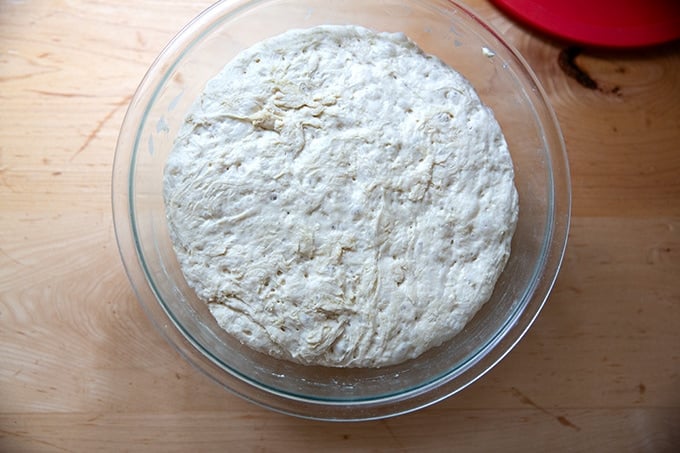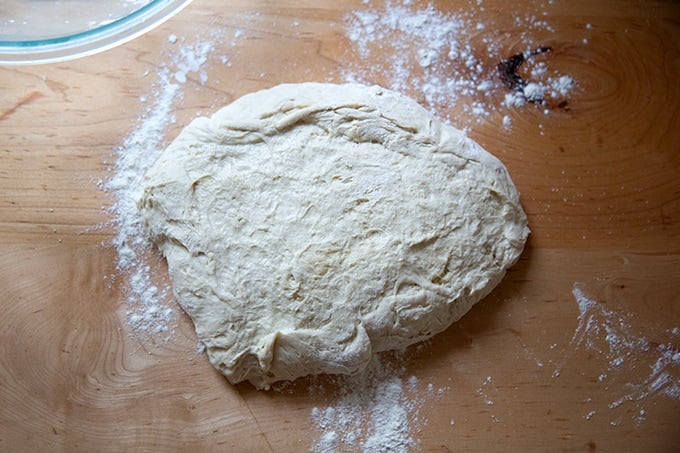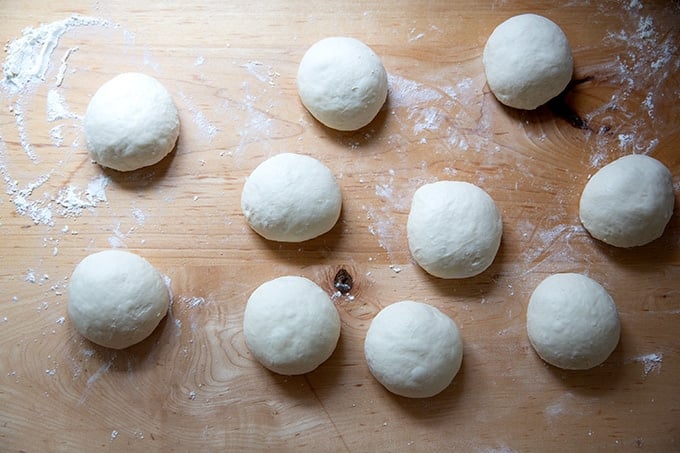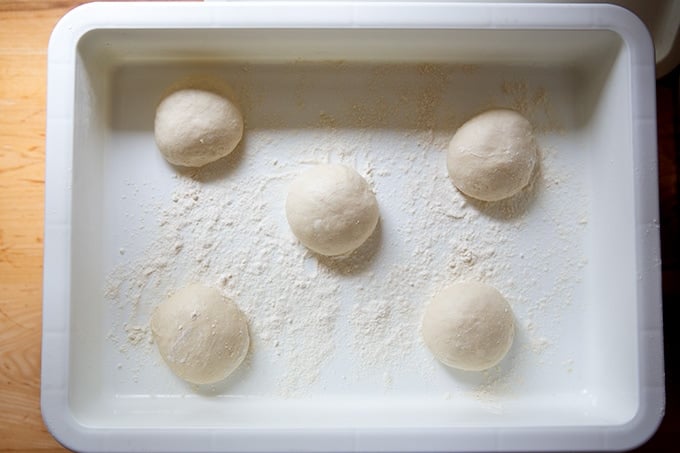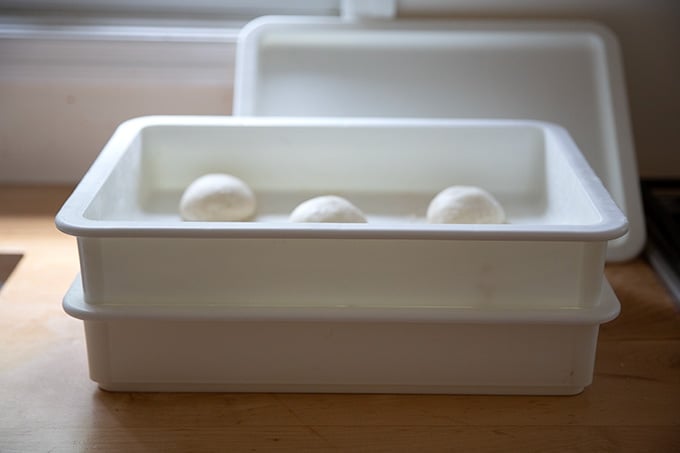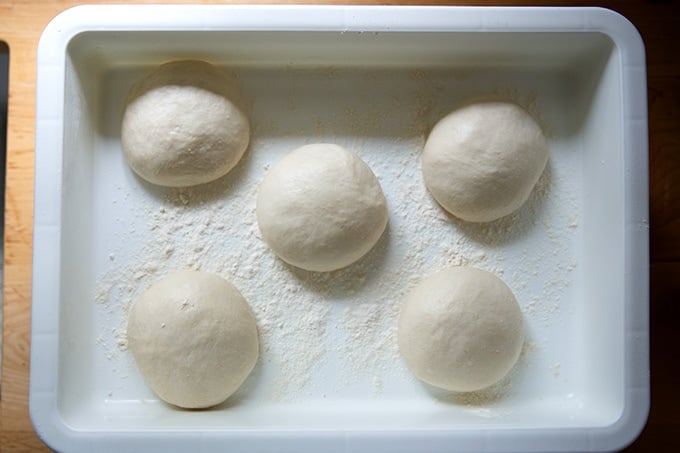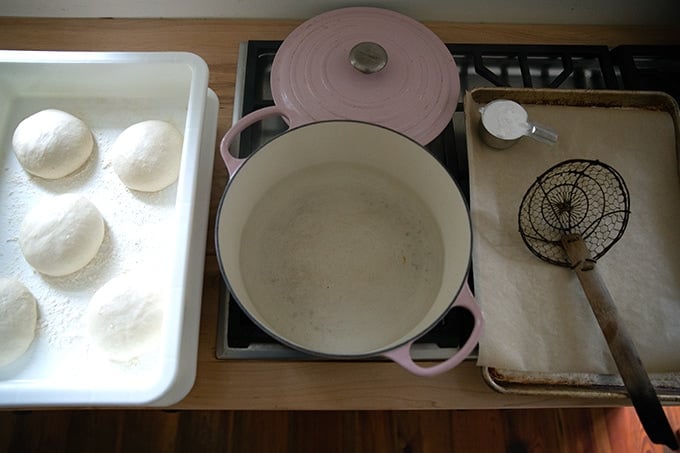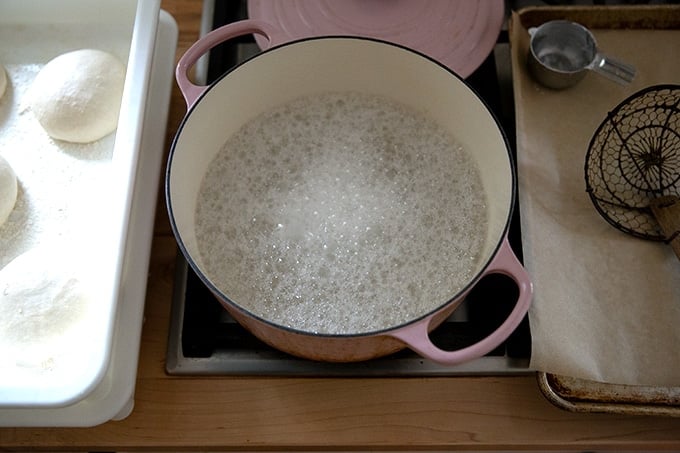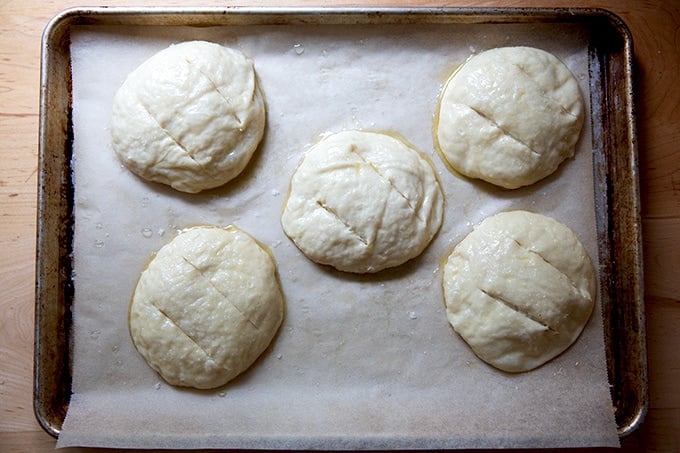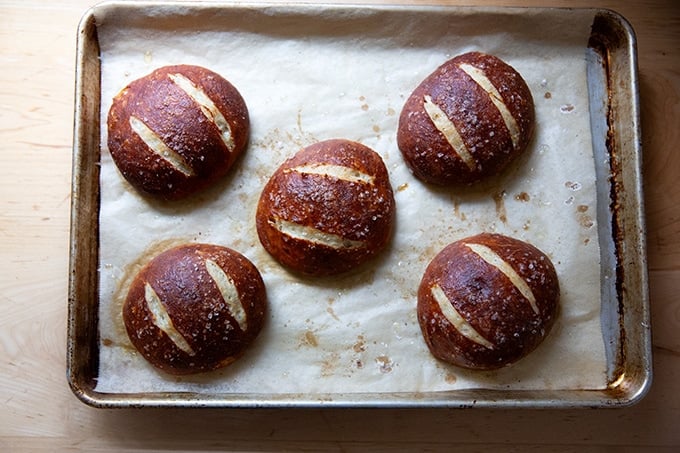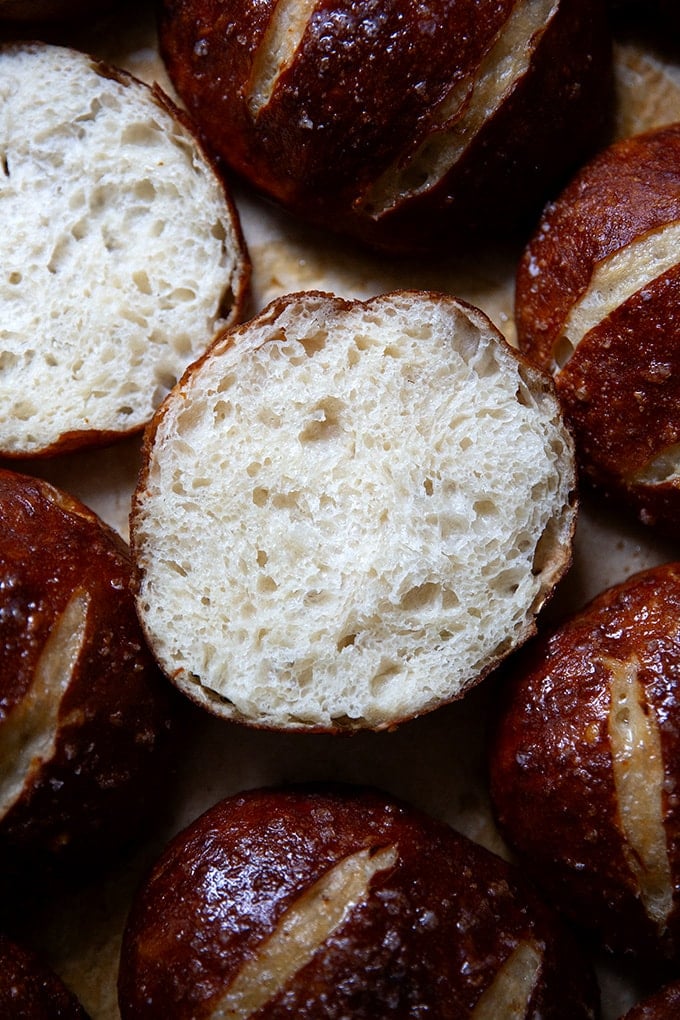At some point this summer, my youngest child introduced the family to pretzel rolls. She had tried one at her grandparents’ house and asked me if I could start buying them, which I did. A bag of four soon proved not to be enough for the family. As soon as I would bring them home, the kids would break into the bag, savagely grabbing them as though they hadn’t eaten all day, as though they feared I might never buy them again. On our recent camping trip, my youngest, before going to bed, staked her claim on the last pretzel roll for breakfast, and when she awoke the following morning to find it eaten, tears ensued. Friends, while these pretzel rolls from the local grocery store are good, they are nothing to write home about. I am still a little perplexed, in fact, by my children’s enthusiasm for them. Deeply brown in hue, like a dark rye bread, the rolls are not terribly inviting (for children anyway), and while the crumb is light, the crust (to me) tastes like cardboard. After buying bag after bag of pretzel rolls, I had to try making them from scratch. The recipe below is the product of several experiments, which began with this favorite soft pretzel recipe. It yields a tender-crumbed but sturdy roll, with an irresistible very pretzel-y tasting crust. In short, I’ve changed the recipe by increasing the water and reducing the yeast, which means the dough comes together without kneading and requires a long, slow rise. I like mixing the dough in the evening, shaping the rolls in the morning, then boiling and baking them around lunchtime. See the recipe box for timing variations. Friends, I hope you love these pretzel rolls as much as I do. My children still have yet to use the rolls for sandwiches, favoring eating them whole, but I have been halving them, spreading them with pesto, and loading them with roasted red peppers, eggplant, arugula, and mozzarella. I think they’d make an excellent egg sandwich, and, around the holidays, they’d be wonderful to have on hand for leftover turkey or ham sandwiches.
How to Make Pretzel Rolls, Step by Step
First, gather your ingredients: Whisk together the flour, salt, sugar, and instant yeast: Then add the water and olive oil: Using a spatula, mix until a shaggy dough forms: Knead briefly with your hands just until a sticky dough ball forms: Cover the bowl tightly with a lid: And let rise at room temperature for 8-10 hours or until doubled in volume: Turn the dough out onto a lightly floured work surface: Divide the dough into 10 portions. Use as scale if you want evenly shaped rolls: Ball up each portion: Then transfer to a lightly floured, roomy vessel to proof: I love these DoughMate lidded containers and can’t recommend them enough if you have the space. If you don’t, use two 9×13-inch pans and cover with plastic wrap to ensure the dough balls don’t try out as they proof: Four to five hours later or when the dough balls have doubled in volume… … it’s game time! Preheat your oven to 400ºF. Line a sheet pan with parchment paper. Fill a large pot with 8 cups of water and bring to a boil: Add 1/2 cup of baking soda to the pot and stir to dissolve: Working with one ball at a time, carefully lower it into the pot, flip it once or twice to submerge, then transfer it to the sheet pan: Once you’ve dunked five dough balls in the hot water, brush each with melted butter and sprinkle generously with flaky sea salt: Use a sharp blade to make two slashes: Then transfer to the oven for 22-25 minutes or until deeply golden brown: Brush with more melted butter immediately: Let cool briefly before halving:
4.8 from 15 reviews
Notes:
For best results, please use a scale to measure. It is the only way to measure accurately. Plan ahead: These rolls require an overnight rise (or an all-day rise, 8-10 hours), a 4- to 5-hour proof, a brief boil, and a 22- to 25-minute bake. Faster Method: Though I have not tried this yet, if you are looking for a faster way to make these pretzel rolls, try this: use 2 teaspoons of instant yeast and lukewarm water. Let the dough rise for 2 to 3 hours initially; then let the shaped rolls proof at room temperature for at least an hour before proceeding. Timing Help: If you are wondering how you might make the timing work with your schedule, consider this: after the dough doubles in volume, you can deflate it, and stick the bowl in the fridge until you can tend to it. The shaped rolls similarly can be stashed in the fridge until you can tend to them. The key is letting the shaped rolls proof at room temperature sufficiently — they should be very light to the touch before boiling, Yeast: If you are using active-dry yeast, sprinkle it over the cold water. Let it stand for 15 minutes; then proceed with the recipe. Salt: If you are using Morton Kosher salt or fine sea salt, use half as much by volume or roughly 2 teaspoons. (If you are measuring by weight, use 13 grams.) Equipment: You’ll need a spider or a large slotted spoon to remove the dough balls from the pot of water. You’ll also need a pastry brush to brush the dough balls with melted butter. Finally, you’ll need a sharp razor blade to slash the dough.

